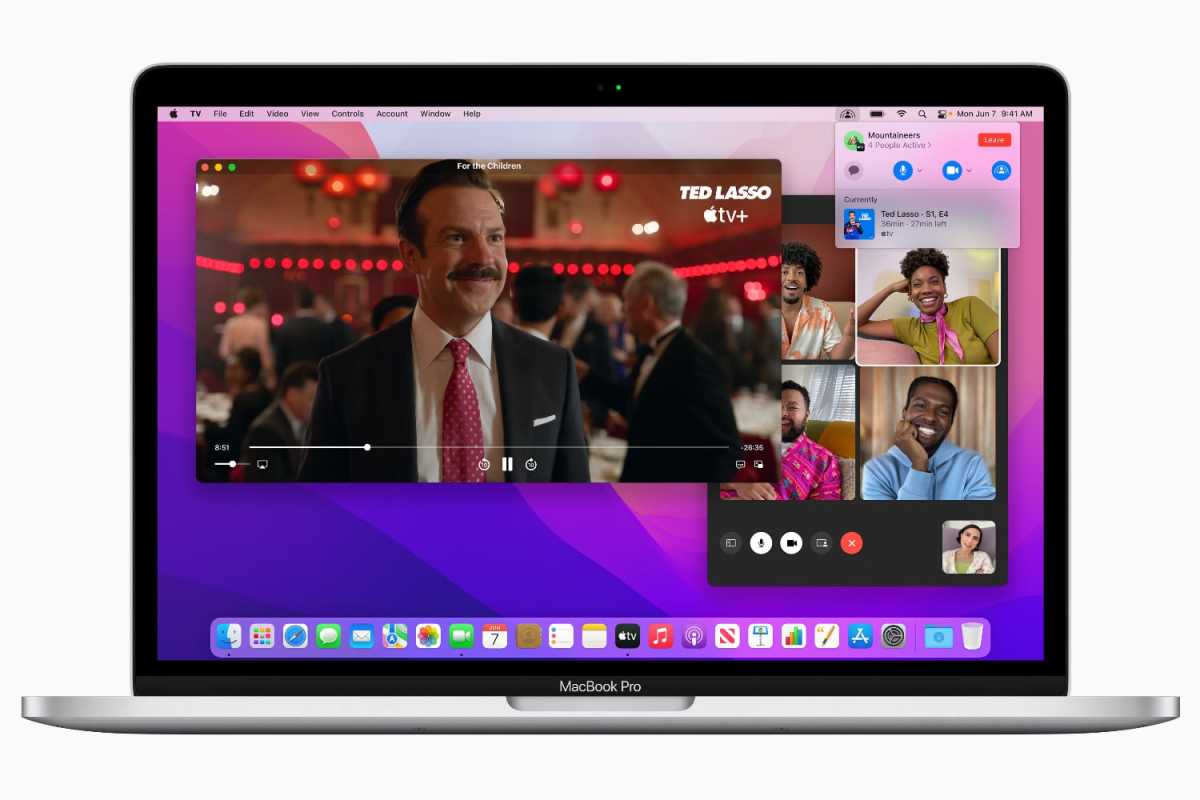Go to Apple’s macOS Monterey Preview site, and you’ll see a robust set of new features. It’s a lot, more than what we’ve seen in the recent past. But if you go to the iOS 15 Preview site, you’ll find it has most of the same features. FaceTime, Messages, Safari, Focus, Notifications, Live Text, and more, most of the features that are in iOS 15 are also in macOS Monterey.
That means that a lot of the features are coming to both platforms at the same time, or close to it. That’s a change from the past, where the Mac would often lag iOS. For example, when Apple released macOS Big Sur, it finally updated Messages with features that had been on iOS for a while.
We have Mac Catalyst to thank for this. Introduced at WWDC19, Mac Catalyst makes it a lot easier for developers to make an app for the iPhone, iPad, and Mac. And it looks like Apple is taking advantage of its own tool to create iOS features that it can simultaneously bring to macOS.
Gone are the WWDCs when the macOS section was a “blink and you’ll miss it” moment. It’s longer now—long enough to make it much more noticeable—but since much of the feature explanations occur during the iOS section, Apple doesn’t need to repeat itself. So it’s still short.
 https://www.macworld.com/wp-content/uploads/2021/06/macos-monterey-sharetime.jpg?resize=300%2C200&quality=50&strip=all 300w, https://www.macworld.com/wp-content/uploads/2021/06/macos-monterey-sharetime.jpg?resize=768%2C512&quality=50&strip=all 768w, https://www.macworld.com/wp-content/uploads/2021/06/macos-monterey-sharetime.jpg?resize=1200%2C800&quality=50&strip=all 1200w, https://www.macworld.com/wp-content/uploads/2021/06/macos-monterey-sharetime.jpg?resize=1240%2C826&quality=50&strip=all 1240w, https://www.macworld.com/wp-content/uploads/2021/06/macos-monterey-sharetime.jpg?resize=150%2C100&quality=50&strip=all 150w" sizes="(max-width: 1500px) 100vw, 1500px" />
https://www.macworld.com/wp-content/uploads/2021/06/macos-monterey-sharetime.jpg?resize=300%2C200&quality=50&strip=all 300w, https://www.macworld.com/wp-content/uploads/2021/06/macos-monterey-sharetime.jpg?resize=768%2C512&quality=50&strip=all 768w, https://www.macworld.com/wp-content/uploads/2021/06/macos-monterey-sharetime.jpg?resize=1200%2C800&quality=50&strip=all 1200w, https://www.macworld.com/wp-content/uploads/2021/06/macos-monterey-sharetime.jpg?resize=1240%2C826&quality=50&strip=all 1240w, https://www.macworld.com/wp-content/uploads/2021/06/macos-monterey-sharetime.jpg?resize=150%2C100&quality=50&strip=all 150w" sizes="(max-width: 1500px) 100vw, 1500px" />SharePlay is a key new feature in macOS Monterey—and it probably originated in iOS 15.
Apple
macOS still takes a backseat to iOS
You wouldn’t know it to watch the WWDC keynote, but there are actually several Mac-specific features in Monterey. It would’ve been nice for some of them to get some attention during the keynote. Some of the new features are:
- Finder enhancements, such as the ability to pause a long copy and a new pie chart copy progress window, a redesigned Go to Folder, and an improved auto-completion engine.
- Windows management features, such as the ability to swap out apps in Split View or to change a Split View window to full screen; automatic window resizing when moving a window to a secondary display, another Mac, or an iPad; and an always-on menu bar in full-screen mode.
- A new option in System Preferences to erase all user data and user-installed apps, allowing you to essentially “reset” a Mac without having to do a complete reinstall.
- Low Power Mode for MacBooks, where the system clock speed and display brightness are turned down to preserve battery life.
- Several Accessibility features, including more VoiceOver descriptions, custom mouse pointers, and improved full keyboard access.
- The Hello screensaver and desktop that came with the 24-inch iMac will be available for all.
Apple is clearly making an effort to improve macOS with Mac-specific features. They may not get the attention they deserve on stage, but they’re there. However, most of what gives macOS Monterey its identity is iOS.
While it’s great that feature parity is here and macOS gets more attention, how it was achieved says that macOS development isn’t the priority, it’s iOS. Even the Mac-specific features in Monterey are tied to the iPhone and iPad. Universal Control, the spotlight feature of Monterey, is all about directly accessing the iPad from a Mac. AirPlay for Mac is all about streaming from your iPhone or iPad to a Mac. The new Shortcuts automation tool originated on iOS. And the Safari section actually talked so much about the iPhone and iPad that it seemed like macOS was forgotten.
Oddly, there’s one glaring missing feature in macOS Monterey that is in iOS 15: offline access to Siri. Apple talked about how Siri uses the Neural Engine in the iPhone’s processor in order to make this feature work. Apple’s M1 for Macs has the same Neural Engine, and yet the feature isn’t available. Siri has always seemed like a low priority for the Mac, and this omission really stands out.
With the launch of the M1 chip, it seemed like the Apple silicon transition would also bring a shift in its attention to the Mac. Apple’s computer was suddenly exciting again, and I even wrote a few months back about how WWDC could be the biggest Mac event in years. We didn’t get that. Not only were there no hardware releases, but Apple also didn’t talk about the M1X processor or tease higher-end desktop Macs. And now macOS Monterey feels like an offshoot of iOS.
Let’s hope that at the next WWDC, Apple will decide to make a effort to show that macOS is a priority. It’s hard not to wonder whether Apple is shifting away from what makes the Mac the Mac, and some time devoted to this would go a long way.





